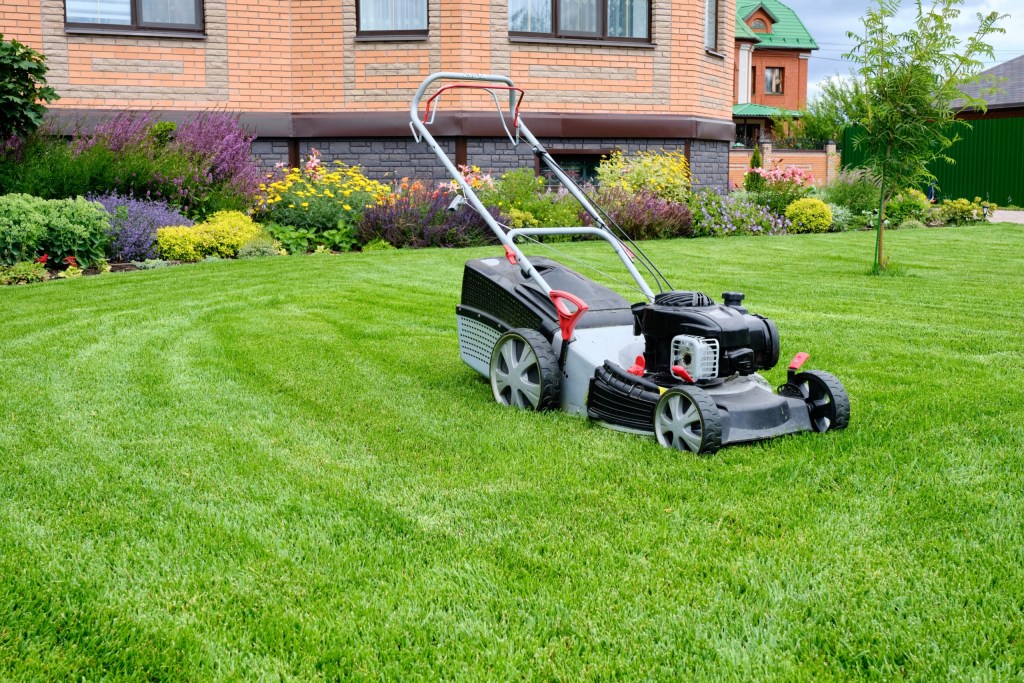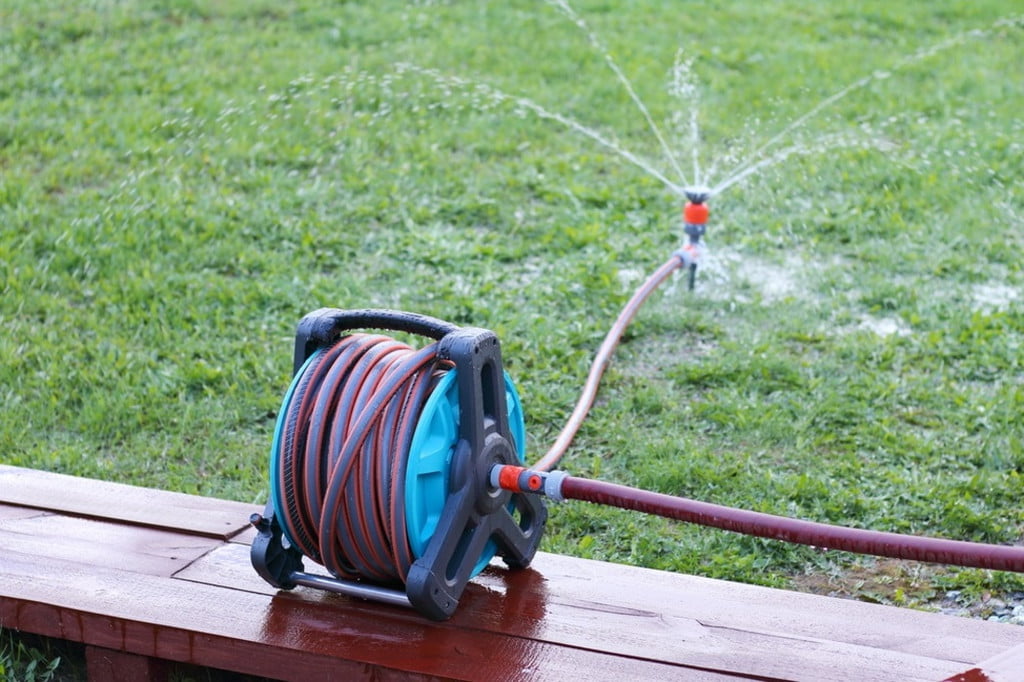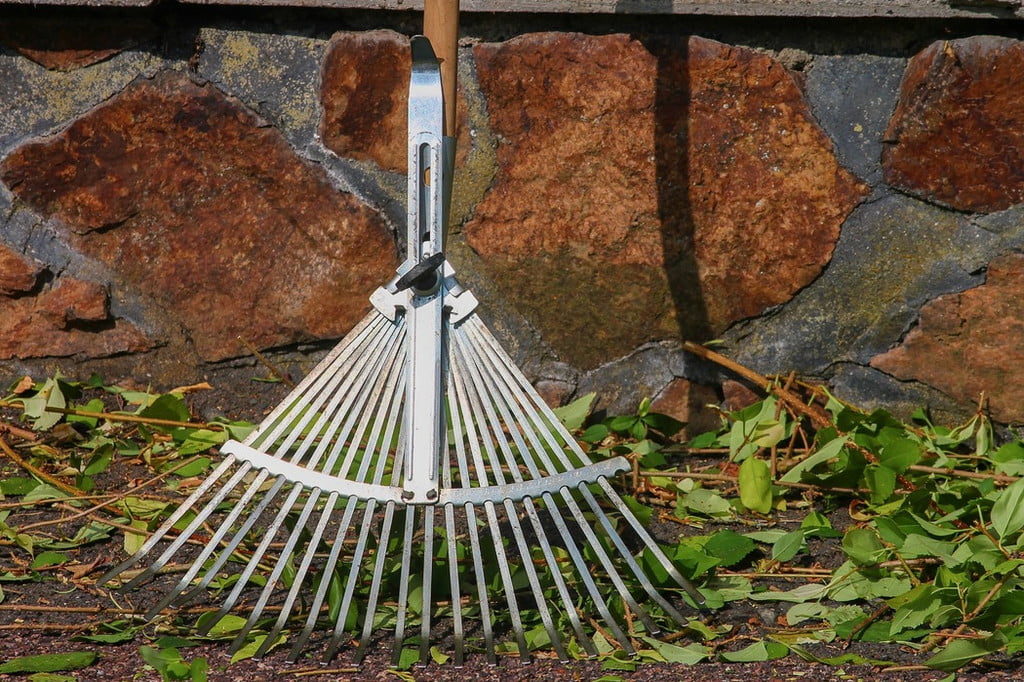
An overgrown lawn is certainly an ugly sight. You may have purchased a new home whose previous owners let the yard go, or maybe you've just been neglecting it yourself. You don't have to be ashamed — this is a common tale, especially when life gets busy.
Whatever the reason, if you find yourself with an overgrown lawn, getting your lawn looking pristine requires a bit of work, since the best way to cut long grass actually happens in eight total steps. Here's how to cut tall grass as quickly and efficiently as possible so you can tackle your overgrown lawn once and for all.

Remove debris and large weeds
When a lawn is overgrown, you never know what could be hiding among the tall grass. The goal here is to ensure you won't damage your lawnmower while mowing, and also to make sure you'll be safe walking through your own lawn.
Step 1: Take some time to roam around and gather any debris that can't be mowed over, like sticks, large weeds, or dead plants.
Step 2: This is also a good time to decide what plants you want to keep and which can be pulled up and tossed out. Remove any plants you won't be saving and get rid of them during this step.

Trim down the top layer
Unfortunately, with tall overgrown grass, you won't be able to use a standard lawnmower for your first trim. This would be a lot of strain on your mower, and it could get jammed with clippings, overheat, or possibly become damaged. Instead, it's recommended that you use a string trimmer for that first hefty trim. Using your trimmer, cut down the top layer of grass, working in sections to keep yourself from getting overly exhausted.

Give the grass a good water
Your grass will need a bit of TLC at this point since such vigorous maintenance can be a shock to it. Water the whole lawn generously and wait a few days or up to a week before moving on to trimming again. That way, your grass can recover from the trauma of such an intense cut.
Address drainage issues
While you're watering, note any areas on your lawn that are puddling with water and appear to be having trouble draining. You may also notice a drainage issue a couple of days later since the grass and dirt underneath will still be wet. Poke around these areas with a fork to aerate your lawn a bit and help with drainage.
Go in for a second trim
If your grass is at a low enough height to mow on the highest setting without cutting more than one-third of the blades, go ahead and begin mowing. Since the grass will still be fairly tall, we recommend mowing in smaller patches to give your mower a rest in between. Trying to tackle the whole lawn at this point may cause overheating or other damage to your mower.

Rake up the trimmings
You may be tempted to leave the trimmings as mulch, especially since it will be a lot of work to remove such a large amount. The huge volume of trimmings, however, will actually not be great for your recovering lawn. Leaving them on your lawn will block out needed sunlight and prevent the growth of new grass.
Reseed your lawn
An overgrown lawn tends to have some spots of unhealthy grass. When certain areas grow faster and longer, they take up more nutrients from the soil and even block out needed sunlight for the areas that are a bit slower at growing.
Also, as we noted prior, such vigorous trimming can be a shock to your lawn, so you may notice some areas that begin struggling to stay healthy after your initial trim. Get your lawn healthy again by reseeding in areas that are bare or discolored. Be sure to water generously after reseeding to get those seeds germinating.

Keep up with regular maintenance
After you've trimmed back the tall grass, watered, removed all of the waste, and reseeded, it's now time to set up a regular lawn maintenance schedule — and stick with it! This means, most importantly, regular mowing.
Step 1: Use the standard rule for your mowing routine, which is to cut tall and mow often. You want to avoid cutting more than one-third of your blades at a time so that the grass can establish strong roots.
Step 2: Be sure to mow in different directions to encourage upward growth.
Step 3: Additional required maintenance for your lawn will include weeding, watering, and fertilizing when necessary.
Managing an overgrown lawn is certainly not the most enjoyable experience. Between the multiple trims, the raking, the watering, and the daily upkeep that comes after, you may have some sore muscles for a few days. All that effort will be worth it, though, since you'll finally be able to enjoy a beautifully pristine lawn that will boost your home's curb appeal. Don't get discouraged. Get that lawn in order so you can enjoy the benefits of your gorgeous yard.



